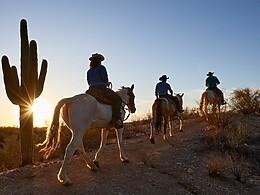
You may think putting a lock on a fence is a great way to symbolize your love, but it can actually be harmful to the endangered California condor.
“People think putting a lock on fencing at viewpoints is a great way to show love for another person. It’s not,” said National Park Service rangers on the Grand Canyon National Park Facebook page.
Visitors securing “love locks” on fences and leaving behind the keys are becoming a danger to these rare birds. These “love locks” are common in tourist areas around the world, like Paris, Venice and, of course, the Grand Canyon. But, birds can choke on the keys, which many people throw into the canyon after securing the locks.
“Leaving pad locks like this is littering and a form of graffiti. But because people will throw their padlock key into the canyon, the scenario becomes worse and more dangerous specifically for a rare and endangered animal of the canyon,” the Grand Canyon National Park posted on its Facebook page. “Condors are curious animals and much like a small child will investigate strange things they come across with their mouths. Condors love shiny things. They will spot a coin, a wrapper or a shiny piece of metal, like a key from a padlock that has been tossed into the canyon and eat it. Condors are not meant to digest metal and many times cannot pass these objects.”
In the Facebook post by the Grand Canyon National Park, rangers showed examples of the locks and waste left behind by visitors. The post also included an X-ray of one condor who had swallowed coins and other metal objects. “This bird had to be operated on to clear the obstructions. If a condor ingests too many objects like this, it could die,” the post said.
During the 1980s, the California condor almost went extinct. The biggest contributing factor to the birds’ deaths was ingesting lead from bullets in animal carcasses. By 1982, only 22 California condors remained in the wild. Luckily, conservation efforts have increased this number to over 500 today. However, humans are still putting the condors at risk. Condors flock to shiny objects, like keys, coins and gum wrappers. The birds cannot digest metal and frequently choke on metal trash left behind by hikers and tourists. These items can either block their airways or become lodged in their digestive system.
The condors are also susceptible to ingesting other trash left behind by tourists. When baby condors eat too much plastic or other trash, they can die. The birds reproduce slowly, so it’s important to prevent any unnecessary deaths of the rare bird to keep the population growing.
“Objects are thrown from the rim every day. Padlocks and trash are not anomalies limited to Grand Canyon. Do your part to not contribute to these bad habits and inform others of what can happen to the wildlife if these behaviors continue,” the Grand Canyon National park said on Facebook.










